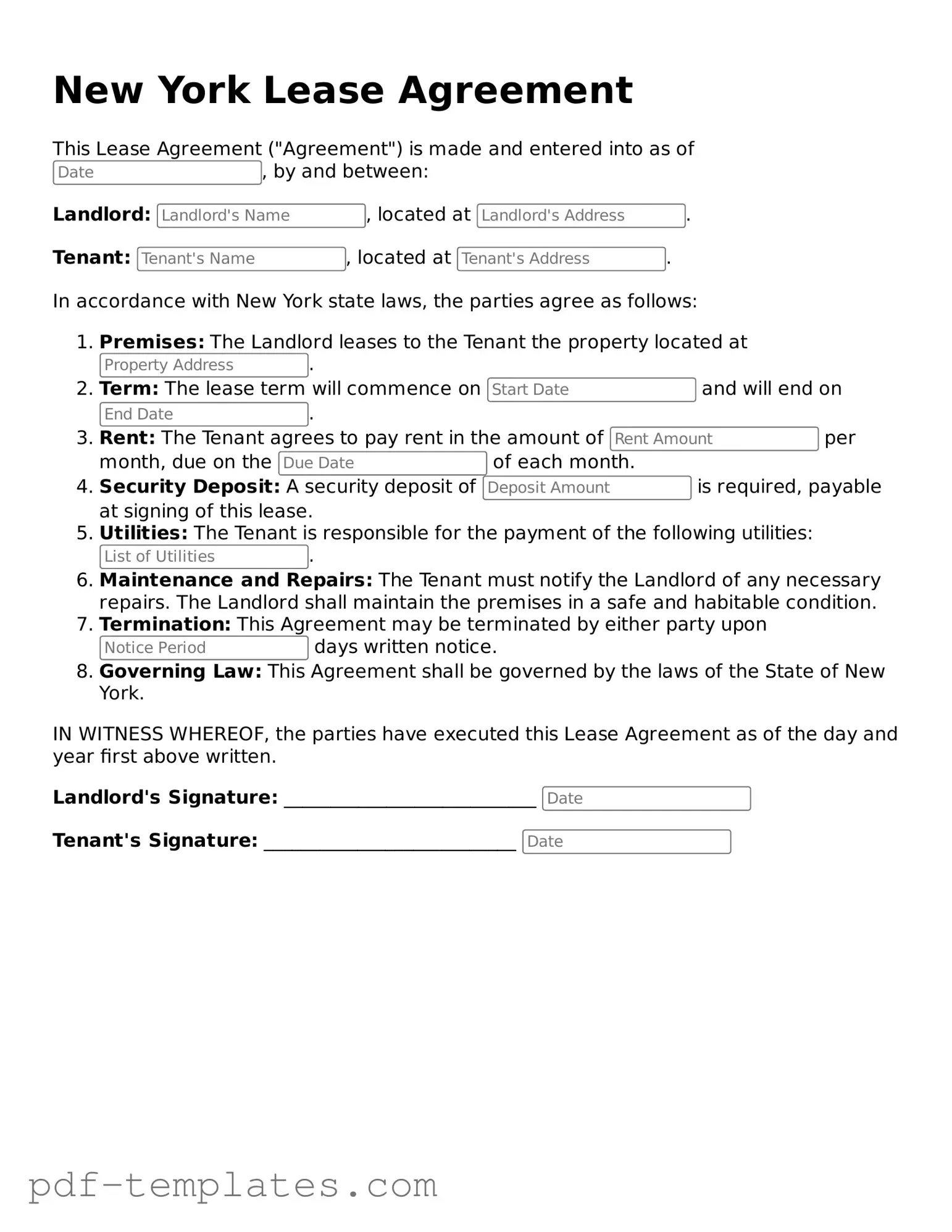Official Lease Agreement Template for New York State
A New York Lease Agreement is a legally binding document that outlines the terms and conditions between a landlord and a tenant for renting a residential or commercial property. This essential form serves to protect the rights of both parties while ensuring clarity in the rental relationship. Understanding its components is vital for anyone entering into a lease in the Empire State.
Ready to start your leasing journey? Fill out the form by clicking the button below!
Customize Form Now
